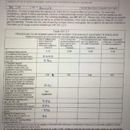Make-up air strategy
We are in Minnesota (Zone 6a). 2200 sq/ft single level, slab on grade. We have a heat pump (no central ducted system) and an HRV.
Both my HVAC contractor and I missed/forgot to plan a strategy for make up air. Even though I submitted table 501.3.1 for my building permit and determined I need a 4″ round passive duct for 39 CFM of make up air using a 300 cfm range hood fan, we just forgot about that requirement.
I have read
https://www.greenbuildingadvisor.com/article/passive-air-inlets-usually-dont-work but I have yet to perform a blower door test. I hope I have a very tight house. Perhaps I should have the test done before making a decision?
I would like to put a simple duct with a damper through the wall behind the slide in style 30″ gas range, am concerned that using a spring loaded damper or a cape hood damper will not be reliable long term. Is this concern founded?
A motorized damper seems more reliable, but I would not have the room behind the range, so I would have to install it in the attic, interlock with the hood, and have the make up air come across the kitchen ceiling. Plus I’m not finding a 4″ motorized damper….only 6″+. Any suggestions on which route I should go? I could just do a recirculating fan and eliminate the issue all together, but I do prefer to have some venting.
GBA Detail Library
A collection of one thousand construction details organized by climate and house part










Replies
Scott,
I advise you to read this article: "Makeup Air for Range Hoods."
Building codes only require makeup air systems for range hoods rated at 400 cfm or more, so your 300-cfm range hood sneaks in under the wire. How you proceed depends upon your flexibility, how your family uses the range hood fan, and whether or not your house has any atmospherically vented combustion appliances (for example, an atmospherically vented gas water heater).
If you rarely turn up a range hood fan to "high," you may be fine. On the rare times you set the fan to "high," you can crack a nearby window.
If this approach won't work for your family, you can consider installing a makeup air system.
Thanks Martin, yes I read that article too.
Unfortunately the energy code in MN, for new construction, says differently, or at least my inspector says differently. To quote him "You need to provide make up air for all exhausted appliances. If range hood exhausts over 400cfm it needs to be interlocked with make-up air unit(device) and air needs to be tempered."
I'm fine opening a window for those times where we need the unit to be on high, but I don't think my inspector will find that acceptable. Based on the table 501.3.1 I posted above and 501.4.2 attached here, I am required, to provide a 4" passive makeup air duct. If you have something that suggests otherwise, I'd love to know about it
Although I prefer the idea of placing it behind the range, I realized that the intake would be too close to the ground. I don't know if there is a code that says how far off grade, but common sense in MN says don't put it 2' above grade. I am thinking high on the wall in the laundry room would be a decent location, other wise I'm looking at another penetration in the roof and I don't like doing that unless I really have too. The dryer vent is nearby though.
However, I'm still concerned about the reliability of the available dampers in a passive system, but I don't know if that concern is founded. Would a motorized damper make more sense and be more reliable? I think the motorized unit would also not allow air through when the wind blows, dryer is running or when the bath fan is on.
That table is a disgrace. Very hard to understand. I like how they force you to put a 3" hole in your house in order to provide 1cfm of makeup air. Makes perfect sense.
You have a couple of options to meet the requirement for zero makeup air.
1. Replace your dryer with a heat pump dryer, reducing your total exhaust capacity to 240. Bonus is pretty big energy savings on the the dryer operation.
2. Install a range hood rated at 250cfm or less. That would bring your total capacity to 335.
Agreed. But here I am. I will just go with a recirculating range hood before I replace our dryer.
Something I've kicked around but never done yet is using a motorized window opener for a passive air vent. They have interlocks for rain sensors and other sensors, probably wouldn't be difficult to wire an interlock with your range hood into it causing a window to open when your range hood turns on. Seems like a simple way to provide passive make-up air that would be automatic and allow it to be very tightly closed when off.
I like the motorized window idea. I don't see anything available for my Anderson 100 series casements.
How about Teeing a duct on my air exchange system's fresh air intake (which pulls from a vent in the soffit) and fresh air supply ducts (dumps to 4 diffusers in front of the 4 heat pump heads)? With a damper in between, in theory, it shouldn't effect the balance of the system. At least not anymore that if it were just straight through the wall somewhere, right?
AirCycler makes what you are looking for. They have 4" motorized dampers and a pressure switch that will open the damper when you turn on the range hood exhaust fan. Here is a link to their website and that product.
https://www.aircycler.com/collections/shop/products/rangerelief?variant=1055170256